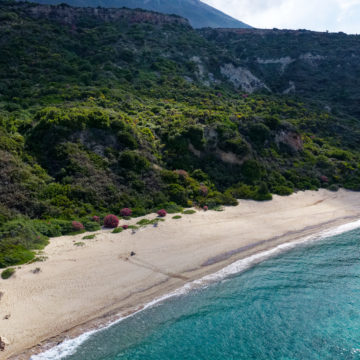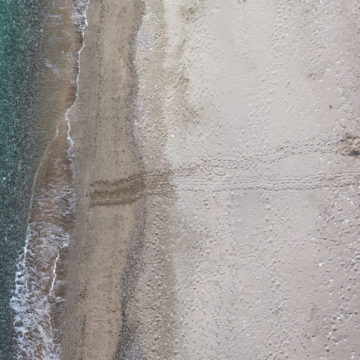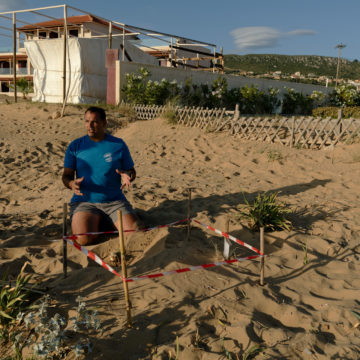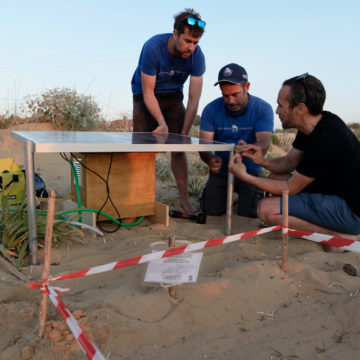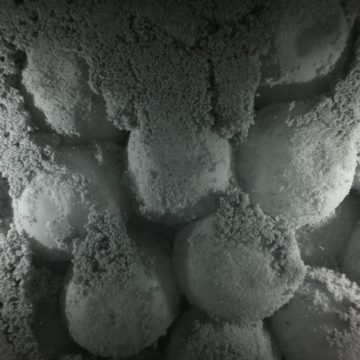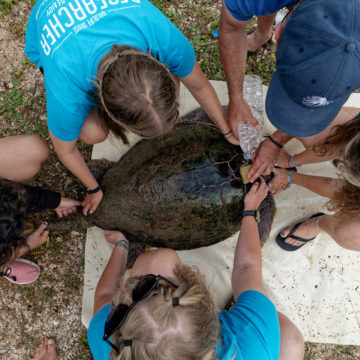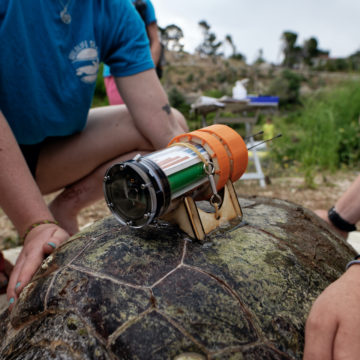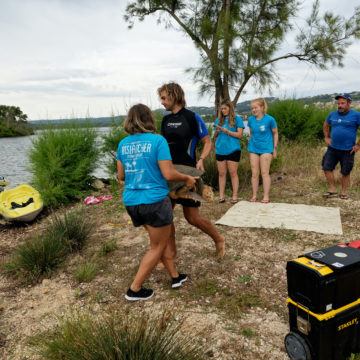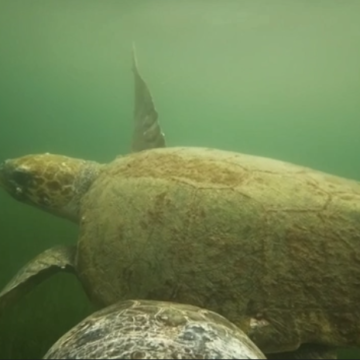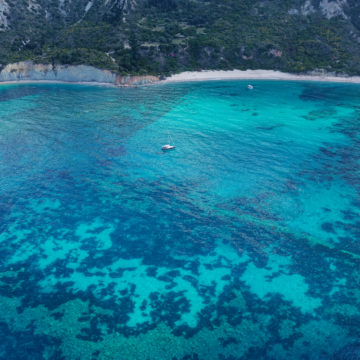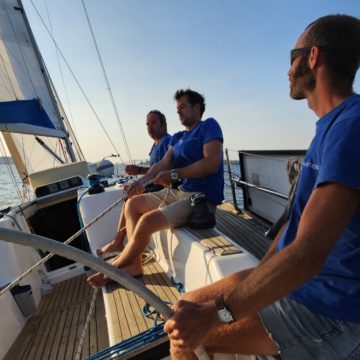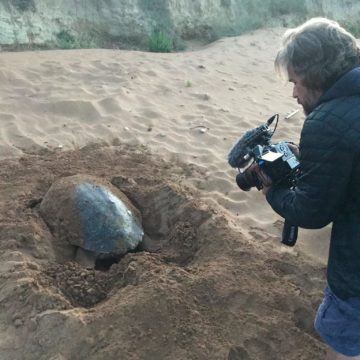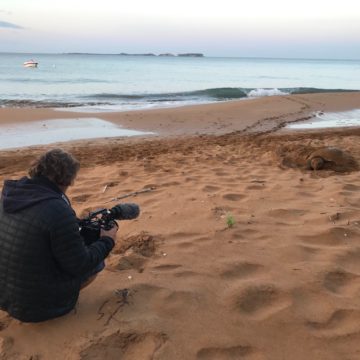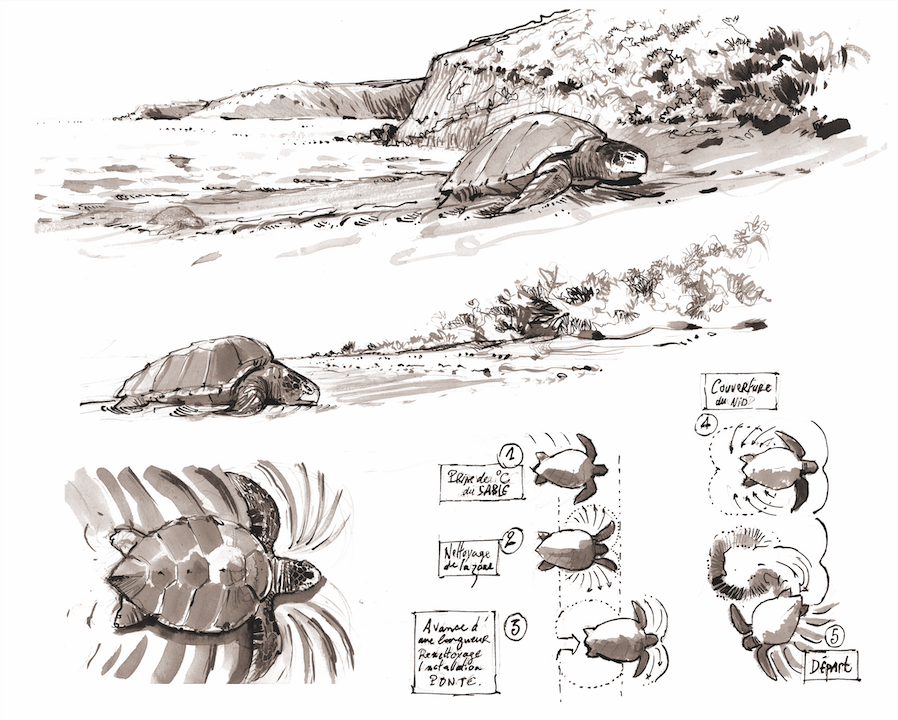
Ionian Islands: seals and turtles
For just over five years, the Octopus Foundation team has worked with several biologists and NGOs on the study of the Mediterranean monk seal in the Greek Ionian Islands. These years were used to develop an open source monitoring tool to better understand this marine mammal in its habitat. After five years of R&D, tests, improvements, an optimized tool and a very large amount of data to analyze, we thought we had fulfilled our mission in the Ionian Sea… But it was in fact only the beginning.
 This area of the Mediterranean also happens to be home to another iconic marine species: the loggerhead sea turtle. Every year, from late April to early August, thousands of Caretta caretta make their way to the beaches of the islands of Zakynthos and Kefalonia, as well as the west coast of the Peloponnese in order to lay their eggs. This large area is crucial for the survival of the species. It is one of the three most important egg-laying regions in the Mediterranean.
This area of the Mediterranean also happens to be home to another iconic marine species: the loggerhead sea turtle. Every year, from late April to early August, thousands of Caretta caretta make their way to the beaches of the islands of Zakynthos and Kefalonia, as well as the west coast of the Peloponnese in order to lay their eggs. This large area is crucial for the survival of the species. It is one of the three most important egg-laying regions in the Mediterranean.
At the end of 2022, the Octopus Foundation decided to launch a vast collaborative project around Mediterranean loggerhead turtles. This project brings together a team of Italian biologists (Dr Paolo Casale, Daniela Freggi and Dr Antonio di Bello) and Greek biologists (Nikos Vallianos, Chanel Comis).
Technology at the service of science
In order to help this group of specialists, the Octopus Foundation will develop two new open source tools. First, a temporary camera will be used to better understand the life of adult turtles in the open sea. Second, a monitoring kit buried in a nest to follow the evolution and hatching of eggs. This box is only installed in nests that have been moved because they are deemed condemned.
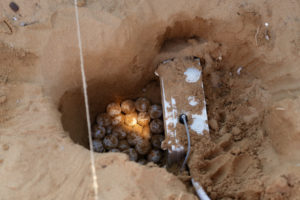 In addition to the technical development of these new tools, the Octopus Foundation will produce a film for the general public. This documentary will present sea turtles whose origins date back several hundred million years and whose scientific study only really started 60 years ago.
In addition to the technical development of these new tools, the Octopus Foundation will produce a film for the general public. This documentary will present sea turtles whose origins date back several hundred million years and whose scientific study only really started 60 years ago.
This first field mission took place during the egg-laying season, between 7 and 23 June. The ideal season to initiate the first technical tests of the prototypes developed this winter and start filming our video documentary. We can confidently say that the results far exceeded our expectations.
During these ten days in the Argostoli area, we worked closely with Wildlife Sense, an important local NGO in Kefalonia co-directed by Nikos Vallianos and Chanel Comis.
Eggs saved by moving the nest
After only took two days on location, we received a call about a nest needing to be moved. The previous night, a turtle had chosen to dig its hole too close to plants whose particularity is to grow in the sand. To survive in such a hostile environment and capture the slightest source of humidity, these plants have the ability to deploy a network of particularly long and fine roots. Having this nest dried out by these roots is too big a risk. We were therefore able to observe the Wildlife Sense team move the eggs a few meters. The “Dune Box” was then installed right next to the new nest, now in a much safer location.
This monitoring kit basically uses the same structure as the one we developed for monk seals. The system is fully autonomous and can be installed anywhere. A 12V battery recharged by 120W solar panels provides the necessary energy. The kit is connected to the local telephone network using a 3G-4G router to automatically and remotely transmit data. And it has a very simple microcomputer which controls, in the case of turtle nests, a temperature sensor as well as a small camera with two infrared lights. To minimize potential disturbances, the camera and sensor are only turned on for one minute every six hours. Once buried, all we need to do is wait the 55 days that the eggs theoretically take to hatch.
Dozens of turtles in a lagoon
In the meantime, Nikos and Chanel showed us the lagoon of Argostoli. It is a shallow expanse of seawater (maximum 2-3 meters deep) measuring 1.5 km long and 900 meters wide. Located just next to the main town of the island, the lagoon is bounded to the west by a stone bridge built in the 19th century whose arches connect the lagoon to the sea.
 This place is unique because dozens of turtles have settled there. Unlike the thousands of turtles that only come to the region to lay their eggs on the beaches before heading back out to sea. Cohabitation in such a confined space, particularly rich in food, proves difficult. Nikos regularly witnessed violent fights between marine reptiles, of an unsociable nature.
This place is unique because dozens of turtles have settled there. Unlike the thousands of turtles that only come to the region to lay their eggs on the beaches before heading back out to sea. Cohabitation in such a confined space, particularly rich in food, proves difficult. Nikos regularly witnessed violent fights between marine reptiles, of an unsociable nature.
This virtually closed-off body of water is perfectly adapted for the first tests of our temporary camera for sea turtles which we have baptized “Remora”, from the name of the fish which temporarily clings to its partners sharks, whales or turtles. After five months of technical development, Quentin and Andy, the two roboticists from the Octopus team, built and assembled the first prototypes. Quentin Orhant is the new member of the Octopus team. We took the opportunity of this project to ask him to join us because his extensive experience in the world of makers and lowtech allows him to tackle complex technological challenges such as REMORA, which we could not achieve alone. When we presented the project to him in November 2022, he was immediately excited by the team and the challenge ahead.
An open source tool, infinitely reusable
Seemingly quite simple, the transparency of the acrylic tube that makes up the body of the Remora actually reveals a small concentration of technology. This inexpensive and open source tool should eventually allow us to better understand the life of sea turtles in the open sea. The challenge was really difficult to produce a prototype in less than six months. But indeed, Quentin, helped by Andy for the video module, managed to succeed brilliantly. These new prototypes now remain to be tested in real conditions, the potential of which is enormous since they could enable scientists to eventually discover not only a very large part of the hitherto unknown physiology of marine reptiles in the open sea, but also to be able to understand how turtles are confronted with human activities. Which we just don’t know.
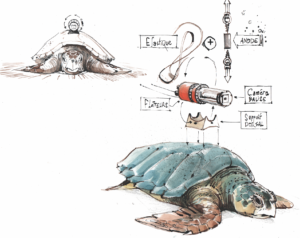 In order for a Remora to be reused on several turtles, we imagined it with different modules: first, a camera controlled by a very small computer, capable of recording around 12 hours of high definition video. Secondly, a board equipped with a series of sensors that captures all the movements of the turtle (including the depth and the water temperature). Finally, two communication modules with their antennas (Argos and LoRa) make it possible to locate and recover the beacon once it detaches from the turtle and floats to the surface.
In order for a Remora to be reused on several turtles, we imagined it with different modules: first, a camera controlled by a very small computer, capable of recording around 12 hours of high definition video. Secondly, a board equipped with a series of sensors that captures all the movements of the turtle (including the depth and the water temperature). Finally, two communication modules with their antennas (Argos and LoRa) make it possible to locate and recover the beacon once it detaches from the turtle and floats to the surface.
The device is about fifteen centimeters long and weighs about 600 grams. Since wildlife laws mandate study devices not to exceed 3% of an animal’s total dry weight, we will fit turtles weighing a minimum of 40 kg, which can theoretically support a weight of 1.2kg.
A bottle in the sea
To be as temporary as possible for the animal, Quentin also studied a support easily breakable and “biodegradable,” being lightly glued on the carapace just for a couple of days. He chose a thin plate of laser-cut plywood. After a few days, it will eventually detach from the shell. The Remora is attached to the wooden support by a rubber band held closed by a small anode which dissolves in seawater. After approximately 12 hours of video and data recording, the anode automatically releases the rubber band . The Remora will then detach from its support and rise to the surface thanks to its orange buoy (composed of a pressure resistant foam).
Once the antennas point towards the sky, the device will start transmitting its approximate positions via the ARGOS satellite constellation, allowing us to head in its direction. Finally, we will get a more precise heading by using a directional antenna to pick up the sound emitted by the LoRa module. That’s the theory.
11 hours in the life of “Denzel”
For the very first prototypes, we expected to encounter multiple technical problems. But to our great surprise, after 11 hours in the lagoon on the shell of the turtle named “Denzel” (which weighs about 45-50 kg), the “Remora 1” finally transmitted its first ARGOS positions. It was 8:30 p.m. Night was falling. We were going to wait until the next day to go looking for it.
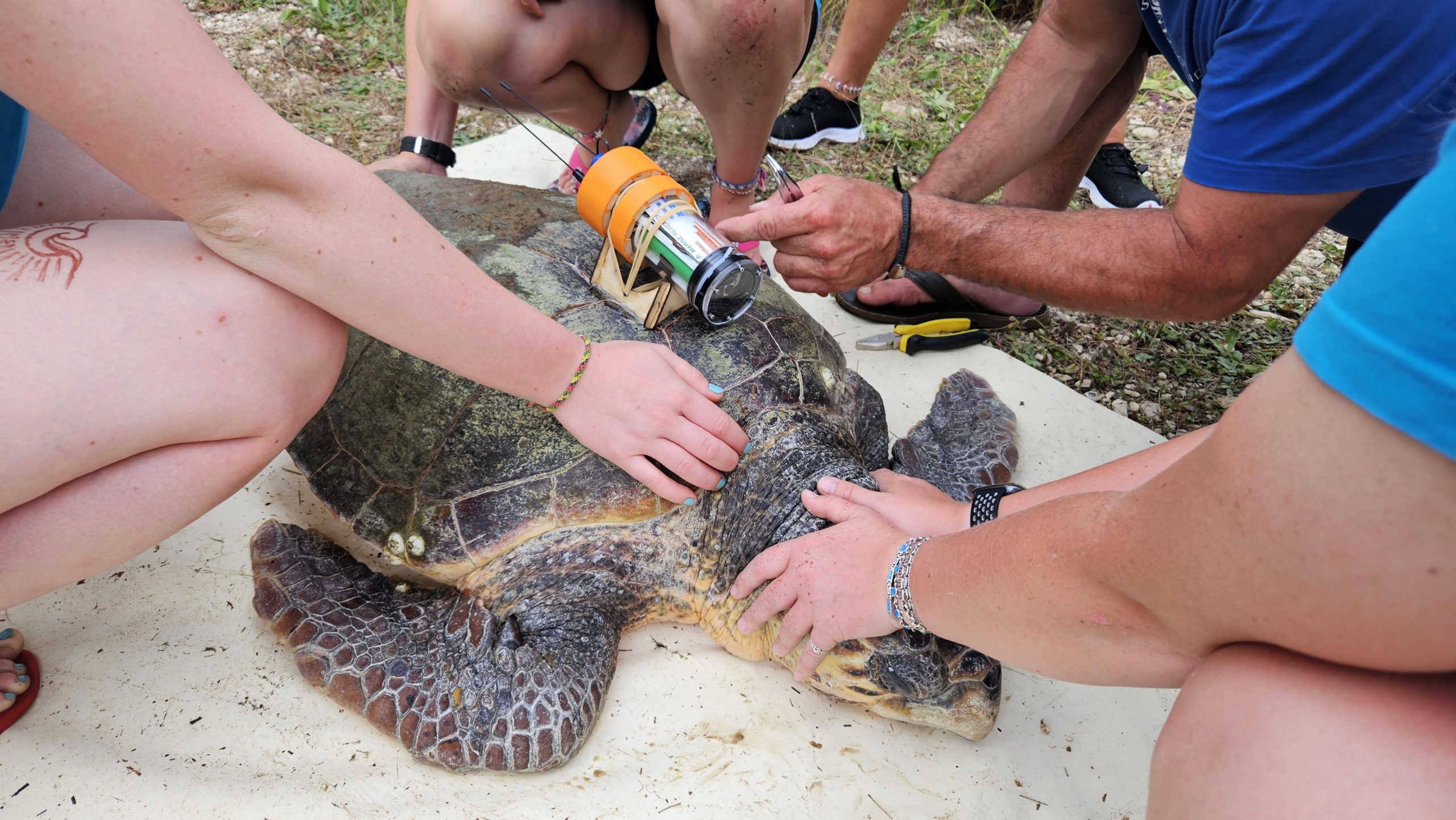
The following morning, at around 8:00 a.m., we were on the lagoon, with new ARGOS points received between 5:00 and 8:00 a.m. Equipped with the LoRa receiver, we ended up finding our “Remora 1”, stranded in the dead algae accumulated in a corner of the lagoon. Even though a very small amount of seawater had made its way in the bottom of the box when we took it out of the water, we felt that the victorious. Indeed, the electronic components worked as intended. Additionally, the memory card recorded 11 hours of video and data! We shared the enthusiasm of the biologists, surprised by such results obtained less than six months after having imagined and launched the project.
A tiring and rewarding mission
On the filming side, this mission was not easy for Thomas and Philippe because they had to accumulate several sleepless nights before having the chance to film an egg-laying turtle. It was only after four fruitless nights that they finally had the great privilege of discreetly observing a latecomer who had chosen the first lights of dawn to get to work. These countless hours in the dark also allowed the filmmakers to test our new camera equipped with an infrared sensor. This device avoids disturbing wild animals such as sea turtles.
After two weeks of mission, we all boarded the ferry exhausted but happy. This project promises an incredible wealth of discoveries on sea turtles.

